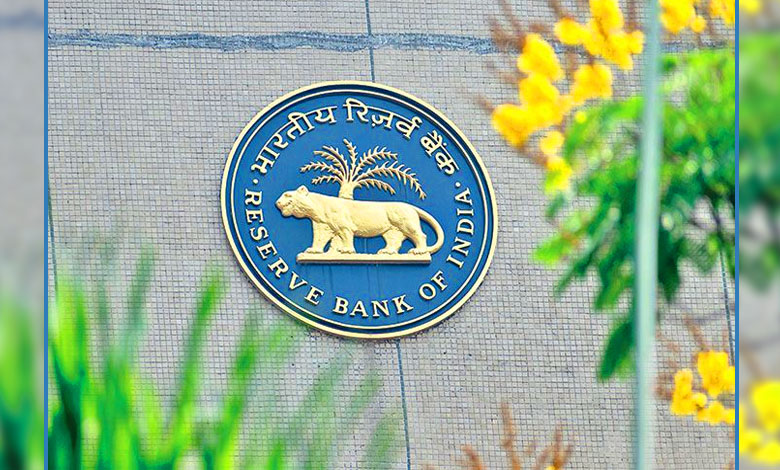RBI’s Liquidity Management Measures: A Smart and Pragmatic Approach, According to SBI Report
SBI's report praises the RBI's smart and pragmatic approach to managing liquidity in India's banking system, highlighting measures like the daily dynamic Variable Rate Repo (VRR) and interventions in the forex market to address ongoing liquidity challenges.

Mumbai: The Reserve Bank of India’s (RBI) recent steps to manage liquidity in the banking system have received praise from State Bank of India (SBI) for being both smart and pragmatic.
According to a report by SBI’s research division, these measures, which include the introduction of daily dynamic Variable Rate Repo (VRR) transactions, are a crucial part of the RBI’s Liquidity Management Framework (LMF).
Table of Contents
The framework is aimed at enhancing the RBI’s ability to manage liquidity more effectively and ensure the stability of the financial system.
What is the RBI’s Approach to Liquidity Management?
In response to persistent liquidity challenges, including volatile movements in government cash balances and the intervention in the forex markets, the RBI has turned to a daily dynamic VRR system as the first step to manage liquidity in the banking system.
This decision, according to SBI, is an effective response to the ongoing liquidity conundrum, with the expectation of further changes in the LMF to better address the situation.
The report from SBI highlights that while liquidity in the banking system has been shrinking, with alarming levels reaching beyond the comfort zone, the RBI’s strategy to address the issue has been both smart and pragmatic.
The introduction of VRR is seen as a delicate balancing act between temporary and permanent liquidity injections and withdrawals, which the central bank continues to refine.
Why Liquidity Is Tight in the Banking System
The tight liquidity situation in the Indian banking system has emerged due to several factors. Notably, the volatility in government cash balances and the RBI’s forex interventions have contributed to the reduction in liquidity.
Additionally, changes in capital flows and government tax outflows have further exacerbated the situation. The tight liquidity became especially pronounced during the period from December 2024 to January 2025.
As a result, the RBI has found it necessary to deploy short-term measures, such as the daily dynamic VRR transactions, to offset the persistent liquidity shortfall.
These repo transactions act as temporary liquidity injections and help to manage fluctuations in liquidity caused by external factors such as forex market interventions.
SBI’s Insights on RBI’s Liquidity Management Strategy
SBI’s report commends the RBI for its proactive and thoughtful measures, such as selling in spot and NDF forwards and short-term buy-sell swaps.
These measures help to replace maturing forward sale positions and counter the liquidity drain caused by the RBI’s intervention in the foreign exchange markets.
The report suggests that the RBI may also consider long-term buy-sell swaps (2-3 years) in the future to further shore up reserves and ensure liquidity is maintained at healthy levels.
Despite these measures, SBI notes that there are operational challenges to liquidity management. These challenges include improving the market microstructure, accurately identifying liquidity tightness in the system, and finding the right balance between durable and transient liquidity injections or withdrawals.
Also Read | World Bank Projects Shrinking Fiscal Deficit for India Amid Rising Tax Revenues and Economic Growth
Impact of System Liquidity on Banking Operations
The system’s liquidity situation has been far from ideal, with liquidity moving from a surplus of Rs 1.35 lakh crore in November 2024 to a deficit of Rs 0.65 lakh crore in December 2024 and further slipping to a deficit of Rs 1.58 lakh crore by January 16, 2025.
This dramatic shift indicates the ongoing challenges in managing liquidity within the system.
Moreover, the injection-absorption ratio, which measures the extent of borrowing from the LAF (Liquidity Adjustment Facility) window, has surged to about 4X.
This means that commercial banks are increasingly relying on the RBI to provide liquidity, a situation that indicates persistent tightness in the banking system.
Systemic Factors Contributing to Liquidity Strain
Several factors have contributed to the liquidity strain in the banking system over the past few months. These include:
- Tax outflows and GST payments, which drain liquidity from the banking system.
- Forex market intervention by the RBI, which reduces available liquidity.
- Volatility in capital flows, which can cause sudden inflows or outflows of funds, impacting liquidity.
- Just in Time (JIT) mechanisms that have led to shifts in government cash balances, further stressing the liquidity situation.
Despite these challenges, the RBI’s ongoing efforts to manage liquidity are seen as positive steps towards stabilizing the system and ensuring the smooth functioning of financial markets.
The Path Forward for RBI’s Liquidity Management Framework
Looking ahead, the RBI is likely to continue refining its Liquidity Management Framework. As per SBI, the central bank’s focus will remain on a delicate balance between temporary and permanent liquidity interventions, while addressing market microstructure issues and keeping an eye on liquidity conditions across various sectors.
With inflationary pressures, global economic conditions, and market dynamics playing pivotal roles, the RBI’s approach will evolve as the situation demands.
In conclusion, the RBI’s liquidity management steps have been acknowledged as both smart and pragmatic by SBI, with careful attention to the interplay of various factors influencing liquidity in the banking system.
While challenges remain, particularly in terms of operational execution and liquidity balance, the measures taken so far are viewed as an essential part of ensuring financial stability in India.
